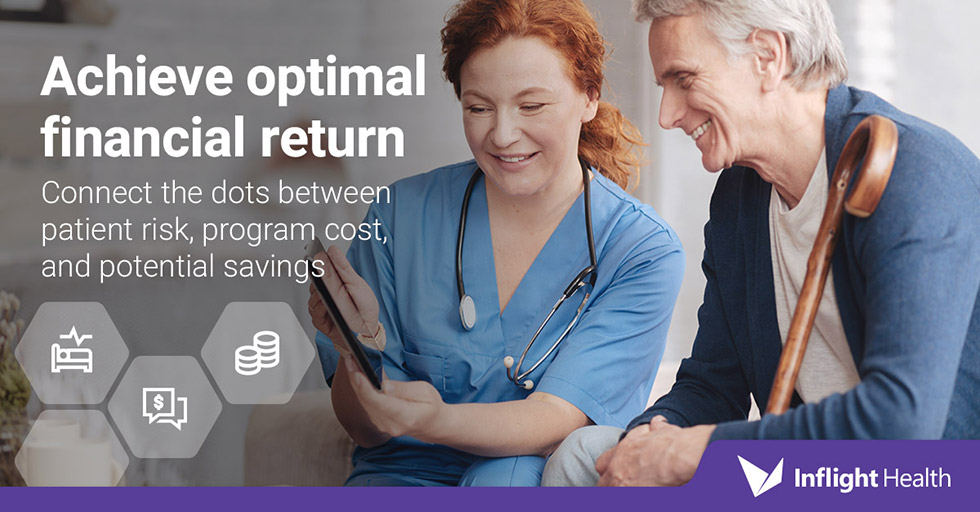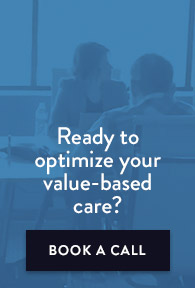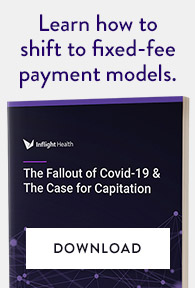Numerous research articles published in peer-reviewed journals demonstrate the Value of Investing (VOI) in care management programs. A 2020 evaluation of Next Generation Accountable Care Organizations highlights the importance these programs have had on reducing utilization, creating a culture focused on proactive prevention and increasing patient self-management. The report also highlighted the nuances and difficulties health care providers face in calculating the actual return on investment (ROI) of these programs.
Measuring the value of “hard” tangible benefits requires a high level of precision and predictability. Organizations need to make evidence-based assumptions about expected event rates, costs per event, and potential events avoided. This has been a barrier to measuring ROI because up until recently most organizations have relied on historical information as opposed to predictive analytics.
“Most NGACOs described using risk stratification to identify high-cost, high-risk beneficiaries for more intensive care management. However, risk stratification methods and their level of sophistication varied among NGACOs, with many indicating they only recently developed the ability to risk-stratify patients prospectively”
Although VOI has been adequate up to this point to justify investment in the people, process, and technology needed to deploy and run a successful care management program, it’s no longer sufficient with narrowing margins and resource-constrained environments. We are at a tipping point in health care where the investment of the premium dollar is scrutinized down to every last penny and leadership is being forced to discriminate between programs that are socially responsible vs. those that are fiscally responsible.
At Inflight Health, our goal is to bridge this gap and align social responsibility with fiscal responsibility by providing organizations with the information and tools needed to achieve optimal financial returns by connecting the dots between patient risk, program cost, and potential savings.
Answering the ROI Question
Using a simple Risk Management Economic Model, like the one developed by Ian Duncan, along with predictive analytics capabilities, ROI can be calculated with the following 5 steps.
Step 1 – Build a comprehensive patient risk profile
Using statistical analysis or a predictive risk modeler, like the Johns Hopkins Adjusted Clinical Grouper (like we do here at Inflight Health), in combination with other evidence-based models, we start by evaluating each patient’s level of risk across hundreds of markers using claims, EHR, and community-level data. We look at current and predicted costs; relative predicted resource utilization; risk of hospitalization, readmission, and potential ED misuse. We also consider care coordination, the density of care, and pharmacy adherence on top of lab and biomarkers. All of this information is packaged into a single comprehensive risk report at the individual patient level.
Step 2 – Risk rank (a.k.a. stratify) the panel
Using predictive analysis we rank/stratify the program population by their expected cost and risk for a 12 month time period directly following the current observation period. From, there we can determine and group the population based on the predicted risk threshold of each patient.
Step 3 – Evaluate risk avoidance
Using predictive costs and event probability information established in step 1, we can then evaluate the risk avoided through various ways: (1) we can estimate risk avoidance by event type (e.g., hospitalizations, readmits, ed visits, etc.), and/or (2) gross savings, irrespective of events. This type of predictive analysis can be done through several statistical approaches including actuarial cell analysis, linear regression, and logistic regression. These are standard outputs in Johns Hopkins ACG model and as a result, these values are available via Inflight Health.
Now to help conceptualize this, say your organization wanted to estimate ROI for interventions deployed to reduce hospitalizations. After completing steps 1 & 2, we would establish what each risk group’s event probability was (i.e., likelihood that admission would occur). Next, we’d need to calculate what that means in terms of volume of expected admissions based on the # of patients in the risk group and the event probability. Lastly, we’d establish what the average cost for admission is for that risk group. Each of these steps would need to be done across each risk level for the entire program panel.
| Risk Group | # of Patients | Event Probability | # of Expected Events | Cost Per Event |
| 3% | 20 | 77% | 15 | $32,000 |
| … | … | … | … | … |
| 12% | 120 | 47% | 56 | $27,000 |
| … | … | … | … | … |
Step 4 – Measure program effectiveness
Now that we know what the risk avoided is and what that equates to in dollars, we can measure the effectiveness of the program based on specific events avoided or by actual dollars saved compared to the predicted cost and event probability captured in step 3.
For example, if we wanted to calculate the program effectiveness in terms of dollars saved for avoiding hospitalizations, we’d need to compare the predicted # of expected admissions to the actual # of admissions to determine the Events Avoided. In our example below, we’ll assume a 30% event avoidance rate which is then multiplied by the cost per event to determine the Gross savings.
| Risk Group | # of Patients | Event Probability | # of Expected Events | $$ Per Event | Events Avoided | Gross Savings |
| 3% | 20 | 77% | 15 | $32,000 | 30% | $144,000 |
| … | … | … | … | … | … | … |
| 12% | 120 | 47% | 56 | $27,000 | 27% | $408,240 |
| … | … | … | … | … | … | … |
Step 5 – Calculate Return on Investment
The last step in all of this is determining the expenses (i.e., FTEs required and their relative cost) for each risk group. Estimating expenses at every risk threshold is a bit overkill, so we recommend grouping risk into categories of low, moderate, high, and catastrophic. Expenses are then factored out for what each patient would “cost” for each risk group. This is all very relative and there can be a high degree of variability within risk groups, so it’s important to monitor expenses closely and to update that calculation as needed to ensure an accurate ROI. Steps for managing panel size and estimating associated costs are out of the scope of this post, but you can get more information on this subject by contacting us at inflighthealth.com Once expenses are factored in, a simple ROI formula can be run to estimate the return by comparing the cumulative savings and expenses.
| Risk Group | Gross Savings | Cum. Gross Savings | Cum. Expenses | Cum. Net Savings | ROI |
| 3% | $144,000 | $144,000 | $274,156 | ($130,156) | .52 |
| … | … | … | … | … | |
| 12% | $408,240 | $831,875 | $631,528 | $230,872 | 1.2 |
| … | … | … | … | … | … |
Parting Thoughts
This is all very high-level and there are many considerations that lie beneath the surface. The most important piece of advice when attempting to calculate ROI is that there will always be a high degree of variability. Because of that, it’s important that the questions lying beneath the surface be exploited and well understood by both management and leadership. The best way to ensure that happens is to allocate the necessary resources needed to conduct ongoing analysis and the reporting needed to track outcomes and make recommended modifications as necessary. This in and of itself can be a heavy lift so if you are starting from the ground up or looking to scale capabilities, it might make sense to speak with vendors or potential partners to help get you moving quickly. At Inflight Health we’re always happy to have an initial call and to chat through ideas/challenges that you might be having. To learn more or to schedule an introductory call, visit us at Inflighthealth.com



